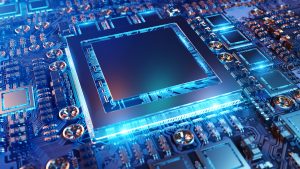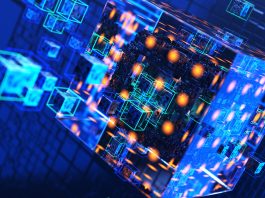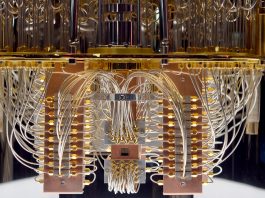Researchers have proposed a new system – likened to noise-cancelling headphones – which uses spectator qubits to minimise noise and error in quantum computing.
Although quantum computers have huge potential to solve new kinds of problems, the technology is currently prone to error. An alteration in their surrounding environment, such as a change in temperature, pressure, or magnetic field, can disrupt their fragile computation building blocks, called qubits.
Now, researchers at the University of Chicago’s Pritzker School of Molecular Engineering (PME) have found a new approach to constantly monitor the noise around a quantum system. The new method allows the qubits to be adjusted in real-time to minimise error.
The approach relies on spectator qubits. These are a set of qubits embedded in the computer with the role of measuring outside noise rather than storing data.
The information gathered by spectator qubits is then used to cancel out noise in vita-data processing qubits.
Research leader Assistant Professor Hannes Bernien compared the new system to noise-cancelling headphones which monitor surrounding noises and emit opposing frequencies to cancel them out.
Bernien said: “With this approach, we can very robustly improve the quality of the data qubits. “I see this as being very important in the context of quantum computing and quantum simulation.”
The study, ‘Mid-circuit correction of correlated phase errors using an array of spectator qubits,’ is published in Science.
Noise and error are barriers to scaling up quantum computers
The challenge of noise and error has grown as existing quantum computers begin to get scaled up. The problem is two-fold.
Qubits easily change in response to their environment. This can alter the information stored inside them, leading to high rates of error.
Also, if a scientist measures a qubit to try to gauge the noise it has been exposed to, the qubit state collapses – losing its data.
“It’s a very daunting and difficult task to try to correct the errors within a quantum system,” said Bernien.
Theoretical physicists had previously proposed a solution using spectator qubits
The spectator qubits, which could be embedded within a quantum computer, would track changes in the environment. They would respond to any environmental perturbations capable of altering qubits.
The team aimed to show that this concept could be used to cancel out noise in a neutral atom quantum array – their preferred quantum computer. Bernien helped develop this award-winning system.
The team designed a system to continuously read out real-time data from rubidium atoms
In a neutral atom quantum processor, atoms are suspended in place using laser beams called optical tweezers. Each array of the suspended atoms acts as a qubit – capable of storing and processing information within its superposition state.
The ability to make a hybrid atomic quantum processor containing rubidium and caesium atoms was first reported by Bernien and colleagues in 2022.
Now, this processor has been adapted so that the rubidium atoms act as data qubits while the caesium atoms are spectator qubits.

The system is designed to continuously read out real-time data from the rubidium atoms and, in response, tweak the caesium atoms with microwave oscillations.
The challenge was ensuring that the system was quick enough. This is because any adjustments to the rubidium atoms had to be nearly instantaneous.
“What’s really exciting about this is that not only is it minimising any noise for the data qubits, but it’s an example of actually interacting with a quantum system in real time,” said Bernien.
The approach was tested by exposing the quantum array to magnetic field noise
By exposing the quantum array to magnetic field noise, the team was able to test their error minimisation approach. It was demonstrated that the caesium atoms correctly picked up this noise. The system then cancelled it out in the rubidium atoms in real time.
However, this initial prototype is just the beginning. The team are aiming to increase the amount of noise and vary the types of perturbations to test whether the approach holds up.
“We have exciting ideas on how to improve the sensitivity of this system by a large factor but it’s going to take more work to get it implemented,” said Bernien. “This was a great starting place.”
In the future, Bernien sees a system of spectator qubits running constantly in the background of any neutral atom quantum computer and quantum computers of other architectures. The solution will eventually minimise the error as the computer stores data and makes computations.









